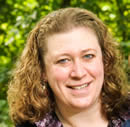 Debra A. Walther
Debra A. Walther
Senior Lecturer
Biology
New Science Building, 003
Phone: 484-664-4058
[email protected]
Education
B. S. Biological Sciences, University of Delaware
Ph.D. Genetics, University of Wisconsin-Madison
Postdoctoral Fellow, Brandeis University
Courses Taught
Concepts of Biology: From DNA to Cancer (BIO 107)
BIO 160
BIO 175
Research Interests
My research interests are focused on understanding the mechanism of recombinational DNA repair using yeast as a model organism. I use chromosome tagging and fluorescence microscopy of living yeast cells to study the dynamics and nuclear arrangement of chromosomal loci involved in recombination. I am interested in understanding changes in chromosome dynamics in response to DNA damage through the development and application of new methods in fluorescence microscopy.
Recent Publications *denotes undergraduate co-author
(as D. Bressan)
>Carlton P. M., J. Boulanger, C. Kervrann, J. B. Sibarita, J. Salamero, S. Gordon-Messer, D. Bressan, J. E. Haber, S. Haase, L. Shao, L. Winoto, A. Matsuda, P. Kner, S. Uzawa, M. Gustafsson, Z. Kam, D. A. Agard, and J. W. Sedat. 2010. Proc. Natl. Acad. Sci. U. S. A. 107(37): 16016-16022.
Ira, G., A. Pellicioli, A. Balijja, X. Wang, S. Fiorani, W. Carotenuto, G. Liberi, D. Bressan, L. Wan, N. M. Hollingsworth, J. E. Haber, and M. Foiani. 2004. DNA end resection, homologous recombination and DNA damage checkpoint activation require CDK1. Nature. 431(7011): 1011-1017.
Miyazaki, T., D. A. Bressan, M. Shinohara, J. E. Haber, and A. Shinohara. 2004. In vivo assembly and disassembly of Rad51 and Rad52 complexes during double-strand break repair. EMBO J. 23(4): 939-949.
Bressan, D. A., J. Vazquez, and J. E. Haber. 2004. Mating type-dependent constraints on the mobility of the left arm of yeast chromosome III. Journal of Cell Biology. 164: 361-371.
Lee, S. E., D. A. Bressan, J. H. J. Petrini, and J. E. Haber. 2002. Complementation between N-terminal Saccharomyces cerevisiae mre11 alleles in DNA repair and telomere length maintenance. DNA Repair. 1: 27-40.
Stewart, G., R. S. Maser, T. Stankovic, D. A. Bressan, M. I. Kaplan, N. G. J. Jaspers, A. Raams, P. J. Byrd, J. H. J. Petrini, and A. M. R. Taylor.1999. The DNA double-strand break repair gene hMRE11 is mutated in individuals with an ataxia telangiectasia-like disorder. Cell. 99(6): 577-587.
